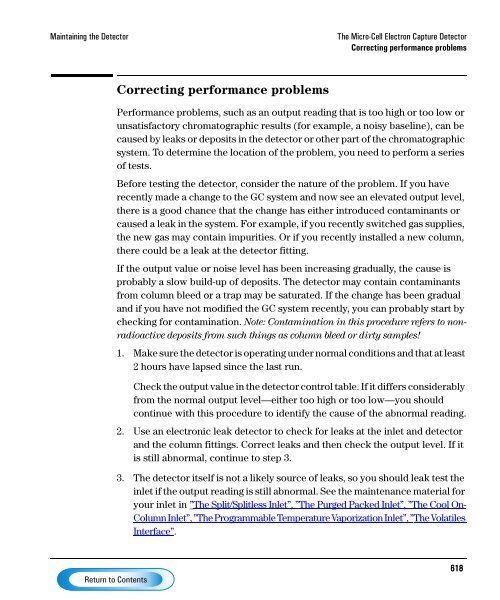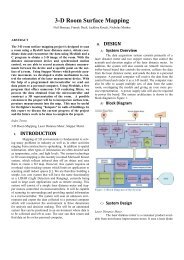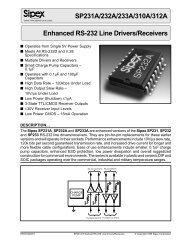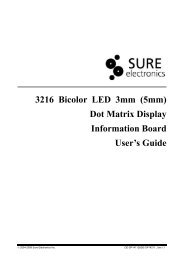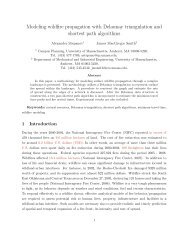The Micro-Cell Electron Capture Detector
The Micro-Cell Electron Capture Detector
The Micro-Cell Electron Capture Detector
Create successful ePaper yourself
Turn your PDF publications into a flip-book with our unique Google optimized e-Paper software.
Maintaining the <strong>Detector</strong> <strong>The</strong> <strong>Micro</strong>-<strong>Cell</strong> <strong>Electron</strong> <strong>Capture</strong> <strong>Detector</strong><br />
Correcting performance problems<br />
Correcting performance problems<br />
Performance problems, such as an output reading that is too high or too low or<br />
unsatisfactory chromatographic results (for example, a noisy baseline), can be<br />
caused by leaks or deposits in the detector or other part of the chromatographic<br />
system. To determine the location of the problem, you need to perform a series<br />
of tests.<br />
Before testing the detector, consider the nature of the problem. If you have<br />
recently made a change to the GC system and now see an elevated output level,<br />
there is a good chance that the change has either introduced contaminants or<br />
caused a leak in the system. For example, if you recently switched gas supplies,<br />
the new gas may contain impurities. Or if you recently installed a new column,<br />
there could be a leak at the detector fitting.<br />
If the output value or noise level has been increasing gradually, the cause is<br />
probably a slow build-up of deposits. <strong>The</strong> detector may contain contaminants<br />
from column bleed or a trap may be saturated. If the change has been gradual<br />
and if you have not modified the GC system recently, you can probably start by<br />
checking for contamination. Note: Contamination in this procedure refers to nonradioactive<br />
deposits from such things as column bleed or dirty samples!<br />
1. Make sure the detector is operating under normal conditions and that at least<br />
2 hours have lapsed since the last run.<br />
Check the output value in the detector control table. If it differs considerably<br />
from the normal output level—either too high or too low—you should<br />
continue with this procedure to identify the cause of the abnormal reading.<br />
2. Use an electronic leak detector to check for leaks at the inlet and detector<br />
and the column fittings. Correct leaks and then check the output level. If it<br />
is still abnormal, continue to step 3.<br />
3. <strong>The</strong> detector itself is not a likely source of leaks, so you should leak test the<br />
inlet if the output reading is still abnormal. See the maintenance material for<br />
your inlet in ”<strong>The</strong> Split/Splitless Inlet”, ”<strong>The</strong> Purged Packed Inlet”, ”<strong>The</strong> Cool On-<br />
Column Inlet”, ”<strong>The</strong> Programmable Temperature Vaporization Inlet”, ”<strong>The</strong> Volatiles<br />
Interface”.<br />
618


